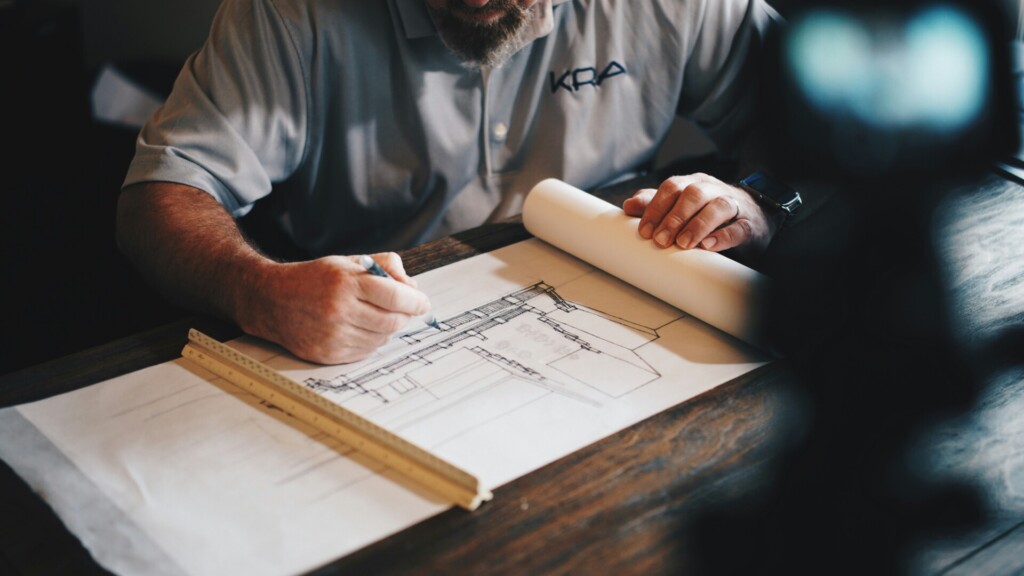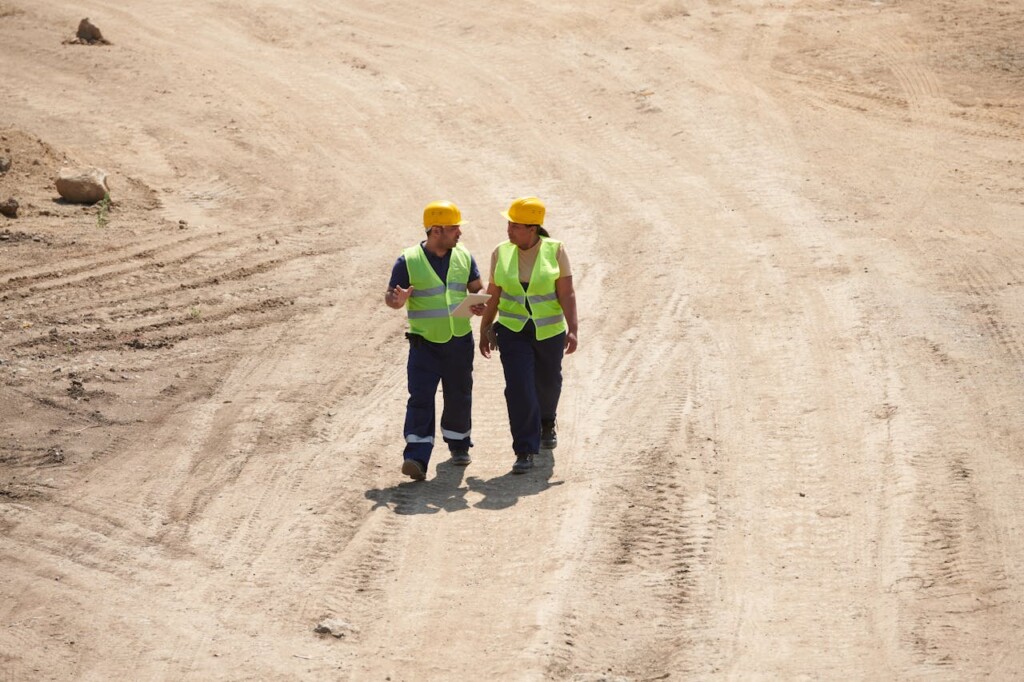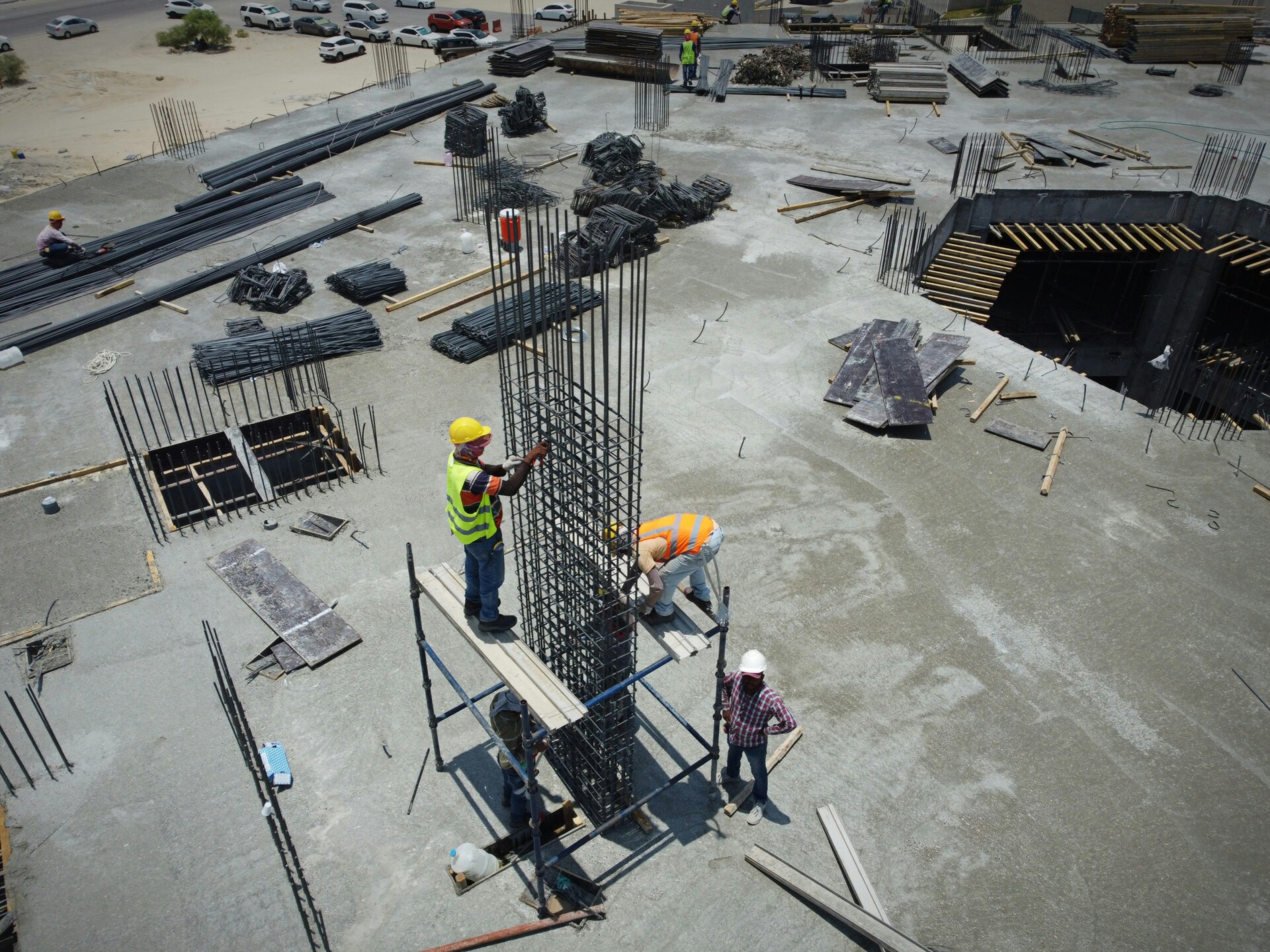Dallas commercial construction is seeing measurable improvements in project delivery times thanks to Lean construction principles. In October 2024, the median issuance time for new commercial permits dropped to 112 days, a dramatic improvement from the historical average exceeding 300 days. This shift reflects how the Toyota Production System is reshaping both public permitting and private construction processes across the region.
Lean construction principles for commercial building Dallas center on maximizing client value while systematically reducing waste and delays. We approach projects by integrating teams early, clarifying what clients truly value, and streamlining every step from design through final delivery. This methodology contrasts sharply with traditional fragmented approaches where design, procurement, and construction teams work in isolation, often creating costly delays and rework.
Which Core Lean Principles Should Guide Dallas Commercial Projects?

Successful commercial builds require a foundation of proven principles that drive efficiency and client satisfaction. We organize every Dallas project around five core Lean principles that eliminate waste and create reliable workflow.
Identify Value From The Client’s Perspective
Value definition starts with understanding what matters most to your stakeholders. Cost control might drive one project while sustainability goals define another. Speed of delivery could be the primary concern for a tenant buildout.
We engage owners, end users, and key stakeholders early to clarify their priorities. This prevents teams from optimizing the wrong metrics or gold-plating features that clients don’t value. Clear value definition aligns all project decisions and resource allocation.
Map The Value Stream
Value stream mapping visualizes every step required to deliver client value. We document the flow of labor, information, equipment, and materials from design through occupancy. This process reveals which activities add value and which create waste.
The mapping process shows decision points, handoffs, and waiting periods that interrupt workflow. Teams identify non-value steps like excessive approvals, duplicate reviews, or unnecessary material handling. Eliminating these steps streamlines the entire delivery process.
Create Continuous Workflow
Flow means work progresses steadily without bottlenecks or stop-start cycles. We break complex projects into manageable tasks, sequence them logically, and maintain momentum throughout construction. Smooth workflow reduces delays and improves predictability.
Creating flow requires careful coordination between trades, reliable material delivery, and proactive issue resolution. Teams use visual management systems and daily huddles to spot problems before they disrupt workflow. Consistent communication keeps everyone aligned on priorities and sequence.
Establish Pull Systems
Pull planning releases work based on downstream capacity and demand rather than predetermined schedules. Crews start tasks when the previous work is complete and resources are available. This prevents overproduction and reduces waiting time.
We implement pull systems through collaborative planning with subcontractors. Just-in-time delivery coordinates material arrival with actual need, avoiding excess inventory and storage costs. Pull planning matches crew size and skills to actual work requirements.
Pursue Continuous Improvement
Continuous improvement captures lessons learned throughout the project lifecycle. We document what works, what doesn’t, and why. These insights improve future project performance through systematic Kaizen practices.
Teams conduct regular retrospectives during construction and comprehensive reviews at project completion. The Last Planner System provides data on plan reliability and commitment tracking. This information guides process refinements and skill development.
These five principles work together through early stakeholder collaboration. Owners, architects, engineers, and trade partners align on value, sequence, and communication protocols. This integrated approach creates the reliable workflow that Dallas commercial projects require for successful delivery.
What Wastes Should Dallas Commercial Teams Remove First?
The eight wastes of Lean construction provide a systematic framework for identifying inefficiencies that drain time, money, and productivity from Dallas commercial projects. These wastes, remembered by the acronym DOWNTIME, represent the most common sources of project delays and cost overruns we encounter on jobsites.
Defects create the most immediate impact on project schedules and budgets. Rework from incorrect installation, damaged materials, or failure to meet specifications forces crews to repeat tasks that should have been completed correctly the first time. We see this frequently with mechanical systems installed without proper coordination or structural elements that fail inspection due to code violations.
Overproduction occurs when crews finish tasks before downstream trades are ready to receive the work. This creates bottlenecks and forces materials or completed work to sit idle, tying up resources that could be deployed elsewhere. A concrete crew completing floor pours ahead of schedule while MEP rough-in remains incomplete exemplifies this waste.
Waiting represents one of the most visible wastes on commercial jobsites. Crews standing idle while materials are delayed, equipment breaks down, or predecessor tasks remain incomplete directly impacts labor productivity. Weather delays compound this issue in Dallas, where summer heat and severe storms can disrupt exterior work.
Not utilizing talent wastes the skills and knowledge of experienced tradespeople. When skilled electricians spend time on material handling rather than complex installations, or when crew members with valuable input are excluded from problem-solving discussions, the project loses efficiency and quality control suffers.
Transportation involves unnecessary movement of materials, equipment, or information across the jobsite. Multiple deliveries of the same material, equipment shuttled between floors without purpose, or drawings that must be retrieved from distant trailers all represent transportation waste that adds no client value.
Inventory ties up working capital and jobsite space when materials arrive before they can be productively used. Excess inventory also increases the risk of damage, theft, and obsolescence while requiring additional handling and storage coordination.
Motion encompasses the extra steps workers take to locate tools, access information, or navigate poorly organized work areas. Workers climbing scaffolding repeatedly to retrieve forgotten tools or walking across large jobsites to check drawings represent motion waste that reduces productive work time.
Over-processing includes steps, inspections, or documentation that exceed client requirements or add no value to the final product. Multiple approval signatures for routine decisions, redundant quality checks, or excessive project reporting all consume resources without improving outcomes.
Targeting these eight wastes creates smoother workflow, improved safety conditions, and lower project costs. Just-in-time logistics help eliminate inventory and transportation waste by delivering materials when crews are ready to install them. Right-sized crews matched to actual work demand reduce waiting and motion waste while maintaining quality control standards that prevent defects.
How Can Teams Implement Lean On Dallas Commercial Builds (Including Permitting)?

Implementing Lean construction on Dallas commercial projects requires a structured approach that addresses both construction execution and local permitting realities. We begin with targeted education and pilot testing before scaling proven methods across the entire project.
Start With Education And Pilot Testing
Training forms the foundation of successful Lean implementation. We educate project teams on Lean fundamentals, focusing on waste identification, value stream concepts, and collaborative planning methods. Initial training requires commitment from all participants, including trade foremen, project managers, and subcontractor leads.
Pilot programs allow teams to test Lean methods on a specific phase or building area before full deployment. We typically pilot value stream mapping, pull planning sessions, and 5S workplace organization on contained scopes. This controlled approach helps identify what works for the specific project conditions and team dynamics.
Plan Collaboratively With Subcontractors
Pull planning with subcontractors creates reliable workflows by matching crew capacity with actual handoff requirements. During pull planning sessions, trade partners work backward from milestones to sequence their tasks based on predecessor completion and resource availability.
We maintain tight communication throughout execution to protect workflow continuity. Weekly planning meetings with subcontractors help identify constraints before they impact the schedule. This collaborative approach ensures that each trade commits only to work they can realistically complete.
Implement Just-In-Time Material Delivery
Just-in-time delivery reduces storage requirements, material damage, and unnecessary motion on the jobsite. We coordinate with suppliers to deliver materials when specific areas or floors are ready for installation. This timing reduces inventory waste and frees up workspace for active construction.
Material delivery scheduling requires close coordination between our procurement team and trade contractors. We track installation progress to adjust delivery windows and prevent material stockpiling that creates safety hazards or workflow disruptions.
Adopt Proven Lean Tools
We integrate multiple Lean tools to create a comprehensive waste reduction system. Value stream mapping helps visualize the entire construction process and identify bottlenecks. The Last Planner System provides structured weekly planning with constraint identification. BIM technology supports coordination and clash detection before fieldwork begins.
5S workplace organization maintains clean, organized work areas that reduce time searching for tools and materials. These tools work together synergistically when properly implemented and supported by consistent team training.
Align With Dallas Permitting Process Improvements
The City of Dallas is using Lean Six Sigma to streamline commercial permitting, with median issuance time for new construction permits dropping from over 300 days to 112 days in October 2024. We align our project planning with this improved process flow.
Reviews with historically longer approval times include drainage and paving engineering, water and wastewater engineering, zoning, building code, and landscape reviews. We engage these departments early in our design process and sequence submittals to avoid waiting waste. Early engagement helps identify potential issues before they become schedule delays.
Track Outcomes And Apply Lessons Learned
We measure schedule reliability through percent plan complete metrics, tracking how often weekly commitments are met. Rework tracking helps identify quality issues and their root causes. Inventory monitoring ensures just-in-time delivery effectiveness.
Data collection supports continuous improvement efforts on future projects. We document successful practices and problem areas to refine our Lean implementation approach. This measurement-based improvement cycle is essential for long-term Lean success.
Research indicates that 45% of Lean construction projects finish ahead of schedule, while 70% of high-intensity Lean projects come in under budget. Most Lean practitioners report improved quality and customer satisfaction compared to traditional delivery methods. These results demonstrate the measurable impact of properly implemented Lean practices on Dallas commercial construction projects.
Conclusion And Next Steps

Lean construction principles for commercial building Dallas emphasize value, waste removal, reliable flow, pull-based scheduling, and continuous improvement. These principles work together to deliver better outcomes for developers and property owners. The City of Dallas permitting process improvements demonstrate how Lean Six Sigma can transform even complex regulatory workflows.
Start small with a pilot project. Map the value stream to identify where delays occur. Use pull planning with subcontractors to match capacity and handoffs. Deliver materials just-in-time when areas are ready. Engage longer-lead Dallas reviews early to prevent waiting waste. Track results and improve each cycle through Kaizen events. These steps help teams finish faster, improve quality, and control costs on Dallas commercial projects.
Ready to implement Lean construction on your Dallas project? Contact EB3 Construction to discuss how we can help you maximize value and minimize waste on your next build.




